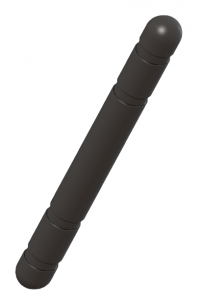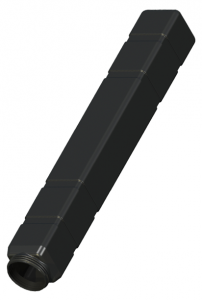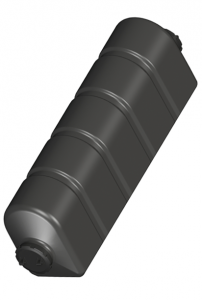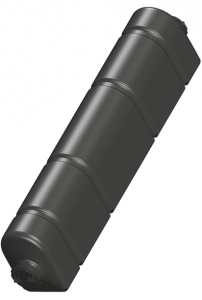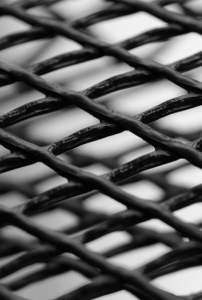
Floating Bag Oyster Culture
Growing oysters at the surface of the water is becoming an increasingly popular practice around the world. To achieve this, farmers are turning to one, two, four and six bag floating systems. At the surface, food (phytoplankton) is plentiful. The motion of the waves help shape the deep cup of the oysters and the growing bags provide shelter from predators. Mesh bags allow for adequate water flow, giving oysters all the nutrients they require to grow.
Floating systems provide small and large oyster producers with scalability. Most floating systems can be handled and processed by a single worker. This greatly reduces operating costs and increases productivity.
Single Bag Oyster System with Floats
Heavy duty vexar grow-out bags are manufactured in both square and diamond mesh patterns, with available mesh sizes ranging from 4 to 23 millimetres. The bags are rigid and easily self-molded to the grower’s specifications. They are suspended in the water by two or more appropriately sized floats. The floats are most often attached to the bag on the sides or the bottom, using zip ties. This configuration can be scaled up or down, dependent on the site conditions.
Two Bag Oyster System with Floats
A two bag system provides a benefit by increasing the yield, given the available space in a given lease. Depending on the bag configuration, it is possible to improve on the footprint of a lease (site) and take up less space. This is accomplished by configuring bags beside one another. This method also provides a cost savings by using fewer floats. Three floats, as opposed to four, can affix to two bags.
Four Bag Oyster Cage System
These systems are appropriate for producers looking to grow oysters at an increased yield while maintaining the size of their workforce. Four bag systems, traditionally, can be handled by one person and allow for better water flow compared to a six bag system. Their construction is normally of rugged aluminum or PVC coated wire. The size of the structure does not impede the water flow necessary for proper feeding. With only four bags, there is less competition for food as all bags have access to new water at all times. Click here to view our four bag cage float!
Six Bag Oyster Cage System
The largest size of floating systems on the market, the six bag configuration houses an impressive amount of juvenile oysters although competition for food is high. The oysters may not grow to their full potential and may also take longer to reach maturity. This system requires a team to lift out of the water and manipulate on the boat or specialized equipment.
Overwintering of Oysters and Hazardous Weather
In colder climates where ice forms on the surface during winter months, it is necessary to submerge oyster growing equipment. Failing to do so will result in a loss of gear and stock.
To facilitate this process, floats are either removed from the bags or caps are removed from the floats. In the scenario where caps are removed, the floats are flooded with water with the structure gently sinking to the bottom. The equipment will remain on the sea floor until the spring thaw. Producers must take into consideration, the depth of the water underneath the ice at low tide.
The same methods can be used in anticipation of potentially severe and hazardous weather events. Hurricanes, tropical storms and other weather can damage or destroy complete oyster sites. Sinking equipment can prevent any possible loss.
We’re here to help. To receive more information on oyster bags, floats and cage systems, please give us a call or send us a message using the form to the right.
